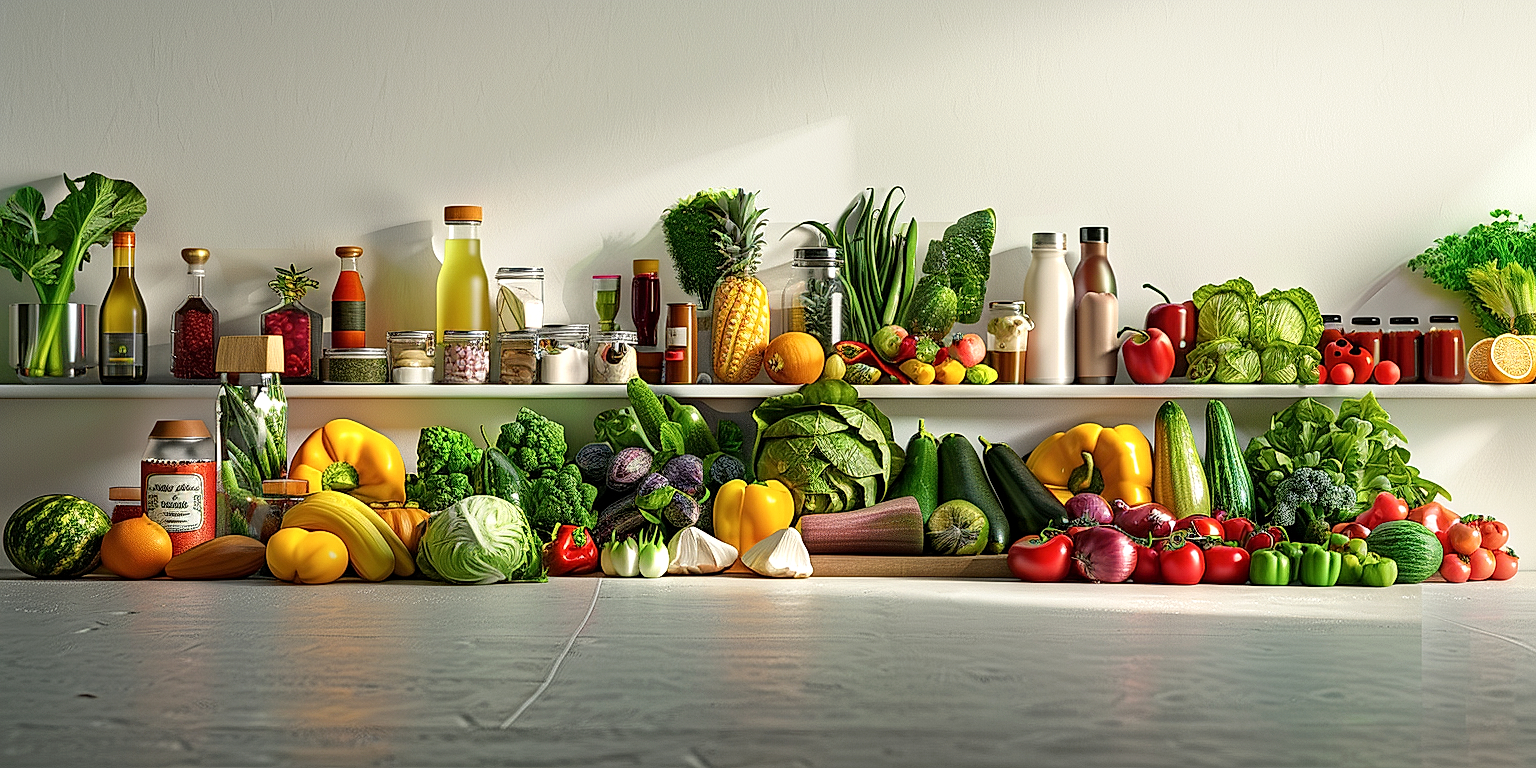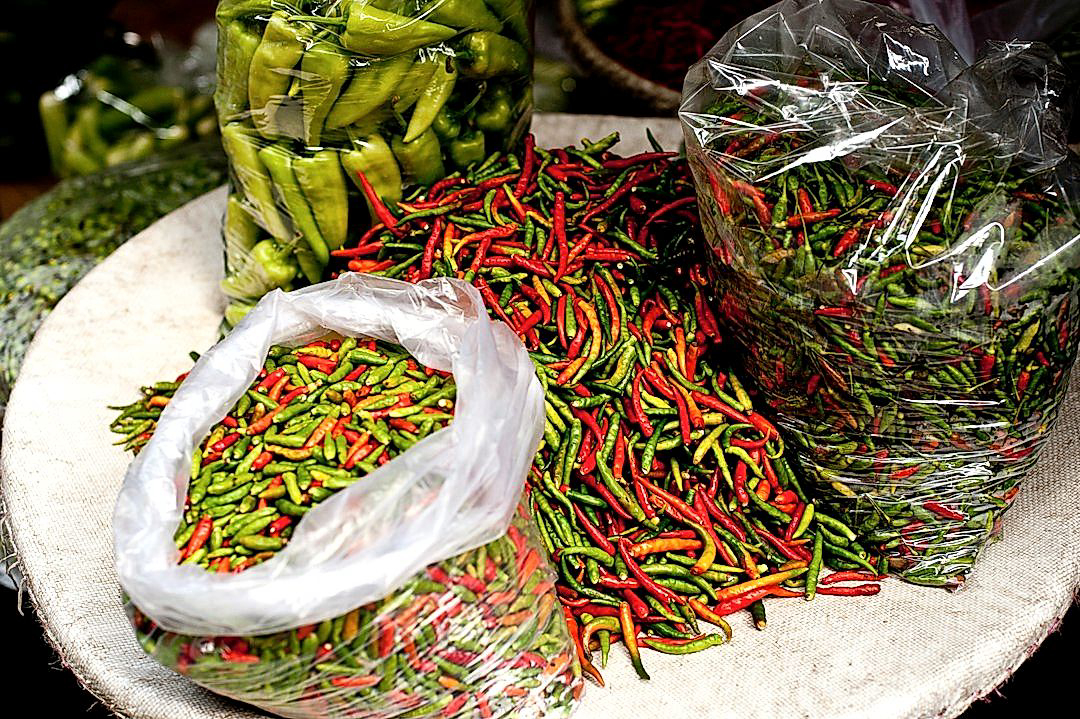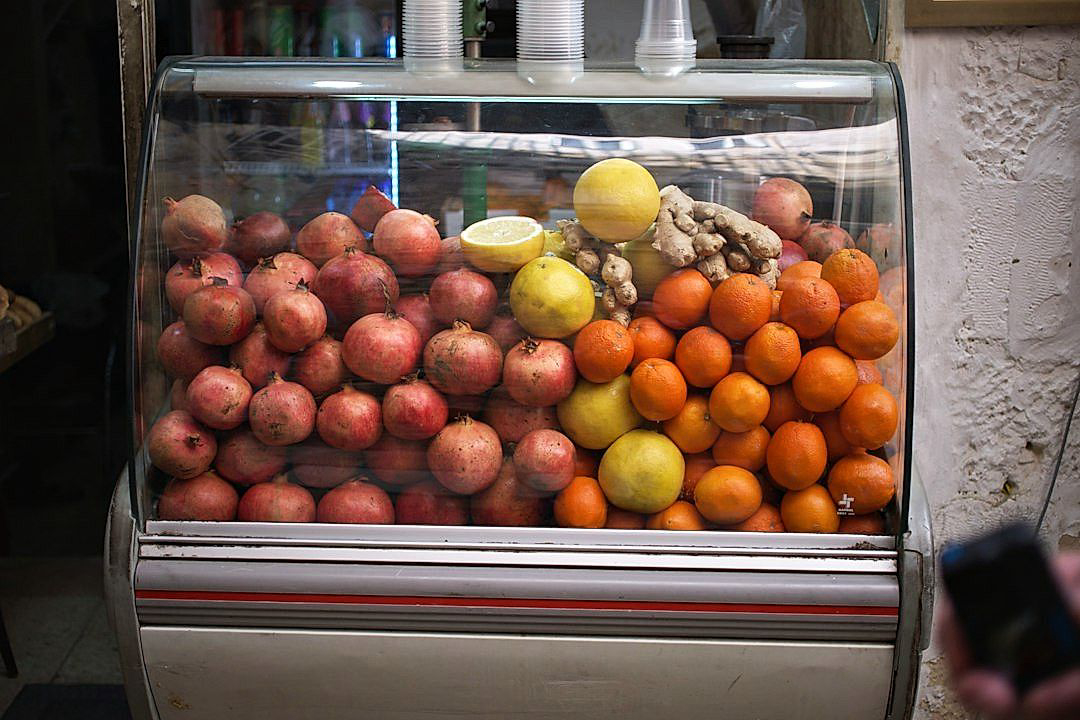Merchandising strategies are a key factor in maximizing sales in the retail industry.
Particularly, cross-merchandising, where two distinct categories of products are displayed together to increase their perceived value, is frequently employed.
By far, produce is one of the most versatile sectors for using this strategy effectively, thanks to its broad appeal and consumption habits.
This article breaks down the most prudent ways of merging produce with other products to heighten customer interaction, excitement, and ultimately, conversions.
To leverage this marketing technique, understanding the customer is fundamental.
We will delve into the practicality of these techniques and how they can be adapted for a range of retail contexts.
Contents
- Tips For Cross-merchandising Produce With Other Products
- 1. Pair Natural Partners like Cheese with Fresh Grapes
- 2. Showcase Dressings Next to Fresh Salad Greens
- 3. Promote Cooking Ingredients Near Relevant Vegetables
- 4. Stack croutons near lettuce for Caesar salads.
- 5. Display Tortilla Chips Alongside Fresh Avocados.
- 6. Position bread near varieties of sandwich fixings.
- 7. Group seasonal fruits with corresponding pie crusts
- The Bottom Line
Tips For Cross-merchandising Produce With Other Products
1. Pair Natural Partners like Cheese with Fresh Grapes
Every supermarket should invest considerable effort into cross-merchandising their products.
This proven strategy effectively boosts sales by encouraging customers to purchase products they might not have initially planned.
Pairing natural partners together is a brilliant way to use cross-merchandising in the produce section.
Their mutual compatibility plays a significant role in making cross-merchandising strategies successful.
Consider the classic combination of cheese and fresh grapes.
These seemingly different items actually make a great pair, most often seen together in wine tastings or elegant social gatherings.
Situate blocks of cheese next to crisp, fresh grapes in the produce section, and customers might be inspired to make a cheese and grape platter for their next get-together.
This kind of positioning not only makes shopping easier for your customers, but also encourages them to buy both products for a single purpose.
By doing this, the supermarket can also increase the average spend per customer.
The advantage of this cross-merchandising tactic is that it appeals to a customer’s sense of convenience and imagination.
Nobody wants to traverse the entire store to find products that are usually used together.
It’s also a smart move to provide recipe suggestions next to these product pairings.
This could push customers to buy these paired items, especially if they’re in search of new cooking ideas.
Another idea would be to have sample tastings available where customers are able to try the paired products.
Once they’ve tasted the delicious combination of cheese and grapes, their pleasure sensors are likely to encourage them to make a purchase.
Being bold with such creative merchandising pays off in terms of increased sales and customer satisfaction.
Always remember, successful cross-merchandising strategies will depend on the retailer’s thorough understanding of their customer tastes and preferences.
2. Showcase Dressings Next to Fresh Salad Greens
When it comes to cross-merchandising, placement is key. In many instances, where you locate items in relation to one another can powerfully influence purchasing behavior.
One particularly effective strategy is to showcase dressings next to fresh salad greens.
It may seem simple, however, placing these two items together has a substantial impact on the shopping experience, and consequently, sales growth.
Pairing salad greens and dressings together effectively encourages customers to make additional purchases they may not have initially planned on.
People who are shopping for salads are inherently looking for dressings as well.
By presenting these items together, you’re creating a more convenient shopping experience, and further facilitating impulsive buy decisions.
Furthermore, showcasing dressings alongside salad greens can encourage customers to try new flavors or brands they might not have considered otherwise.
It’s a way of subtly suggesting that the two products naturally complement each other, making it far more likely for customers to place both items in their baskets.
This also gives you the opportunity to pair high-margin items with more commonly purchased goods, enhancing profitability whilst ensuring customer satisfaction.
Beyond just dressings and salad greens, this same logic could be applied to a multitude of products throughout the grocery store.
For instance, displaying pasta next to tomatoes and onions or centerpiece meats near relevant spices and side dish ingredients. By doing so, you can create a ‘meal solution’ experience for the customer.
This strategy, while it focuses on convenience, it also contributes to an attractive retail presentation.
When similar products are grouped together, the various colors, shapes, and sizes can create a visual appeal, enticing customers even further.
It’s clear that the simple act of showcasing dressings next to fresh salad greens is a strategy with far-reaching implications for sales, profitability, and customer satisfaction.
Thus, embracing such techniques can ensure an intuitive and pleasurable shopping experience for customers while securing sizeable business returns.
3. Promote Cooking Ingredients Near Relevant Vegetables
One effective strategy in cross-merchandising produce with other products is to promote cooking ingredients near corresponding vegetables.
This technique functions on the principle that consumers are more likely to purchase ingredients and produce that are presented together as parts of a potential meal.
For instance, garlic and fresh herbs can be showcased next to tomatoes and bell peppers, inspiring shoppers to make a homemade pasta sauce.
The key to success in this strategy is understanding the different dishes and food preparations that the produce can be used for.
For example, leeks can be promoted next to potatoes and cream for a delicious leek and potato soup, enticing shoppers to buy all the ingredients needed.
Displaying cooking oil, soy sauce, and sesame oil near an array of fresh stir fry vegetables not only drives the sale of both the produce and the condiments but also provides an easy meal solution for the customer.
By strategically placing cooking ingredients next to relevant vegetables, retailers can influence shopping behavior, stimulate impulsive buying, and increase basket size.
Additionally, this merchandising technique can provide an enhanced shopping experience.
Shoppers can appreciate the convenience and time saved from not having to search through various aisles for the ingredients needed for a recipe.
It’s also a subtle way of providing meal planning suggestions and cooking ideas to customers.
On a psychological level, grouping cooking ingredients with relevant vegetables creates a visual cue that stimulates a shopper’s imagination about potential meals they can prepare.
Moreover, it’s also worth noting that this strategy enhances the perceived freshness of the cooking ingredients.
Positioning them next to vibrant, fresh vegetables can increase their appeal and likelihood of being purchased.
Indirectly, these positive experiences can foster a stronger connection with the brand or store, potentially boosting customer loyalty.
Through careful planning and execution, this approach can increase sales volume not only of the produce but also the accompanying ingredients.
However, it’s essential to remember that success in cross-merchandising demands regular review and adjustments based on changing consumer behavior and preferences.
4. Stack croutons near lettuce for Caesar salads.
Boldly venturing into the realm of cross-merchandising, one of the most effective strategies involves strategically pairing croutons with lettuce, particularly for Caesar salads.
Why is this the case, you might ask? Well, it’s a simple case of demand and supply. The beloved Caesar salad, a classic favorite, features these two essential ingredients front and center!
When you position croutons alongside fresh, crisp lettuce greens, not only are you making it easier for your customers to purchase these complementing items together, but you are also subtly promoting and increasing demand for both products.
Thus, through clever cross-merchandising, you not only improve your customers’ shopping experience but also boost your sales!
However, it’s not just about stacking croutons next to lettuce. Visual appeal is also a crucial component to consider. An enticing display can work wonders in persuading customers to try something new or buy more of what they already love.
This is why it’s crucial to take advantage of the contrasting colors and textures between croutons and lettuce. Imagine the golden, toasted croutons against the vibrant green lettuce. Not only does this create a visually appealing display, but it also stimulates the appetite of your customers!
Of course, the freshness of your produce is intrinsically linked to the success of your cross-merchandising efforts. All the strategic placement in the world won’t achieve much if the lettuce isn’t fresh and if the croutons aren’t crispy. Therefore, always take care to ensure the quality of your products.
So, how about those customers who might not have initially thought about buying croutons or lettuce? By using cross-merchandising techniques to showcase these items together, you create an impulse purchase scenario.
You intrigue your customer, sparking their interest in trying out a Caesar salad perhaps. Suddenly, buying just a head of lettuce or a pack of croutons fades in comparison to buying both for an instant, appetizing meal!
Moreover, with this strategy, you’re also likely to introduce your customers to new brands or types of croutons they might not have otherwise noticed or considered.
All in all, the strategy of stacking croutons near lettuce for Caesar salads is one that taps into the inherent advantages of cross-merchandising – maximizing product exposure, encouraging impulse purchases, improving store layout efficiency, and ultimately – increasing sales. Hence, it’s easy to see why it’s a staple in the cross-merchandising handbook!
5. Display Tortilla Chips Alongside Fresh Avocados.
Within the realm of cross-merchandising, the combination of tortilla chips and fresh avocados stands out for a number of reasons.
Such a pairing is not only convenient for shoppers but also boosts sales for both products.
Imagine a shopper walking down the produce aisle, spotting fresh avocados, then immediately noticing a nearby display of tortilla chips.
This immediate visualization of the potential for making guacamole could easily encourage them to purchase both items, effectively increasing sales and customer satisfaction.
To implement this strategy successfully, it’s important to pay careful attention to placement and signage.
Simply placing the chips next to the avocados may not be sufficient to draw attention to the pairing.
Consider investing in well-designed signs that highlight the combination as a great choice for making fresh guacamole.
Additionally, take note of the physical aesthetic and strategic layout of the display.
A neatly stacked, organised display of tortilla chips adjacent to green, ripe avocados is more likely to draw the gaze of passing shoppers.
Apply variations of this strategy to suit different store layouts and customer demographics.
For instance, if your store’s main clientele consists of millennial shoppers who value healthy, convenient meals, advertising the potential for making healthy homemade guacamole could be a big draw.
In contrast, for a store located in a neighborhood that loves entertaining, consider promoting the pairing as a great choice for party snacks or game day appetizers.
This concept of cross-merchandising can be replicated with many other combinations of produce and snack foods.
For instance, freshly cut fruits can be displayed with a selection of yogurt for quick and easy smoothie options.
At its core, the goal of cross-merchandising is to create complementary pairings that increase the likelihood that if a customer picks up one item, they’ll pick up the other as well.
6. Position bread near varieties of sandwich fixings.
A very fundamental and simple concept in cross-merchandising is creating a one-stop shopping experience for your customers.
One way to do this and increase sales is by positioning bread near varieties of sandwich fixings.
This strategy capitalizes on the simple fact that when people buy bread, they are likely also in the market for items to make sandwiches.
Consider think of it as creating ‘mini meal kits’ within your store.
Which variety of bread could be more benefiting from the display? Naturally, whole grain and artisan breads, given the health conscious trend and desire for ‘foodie’ quality ingredients.
Merchandising bread next to items like fresh lettuce, tomatoes, and deli meats can trigger impulses to buy all these items together, especially if they weren’t already on the customer’s shopping list.
There’s also the element of convenience, which is a major factor in today’s fast-paced society.
Instead of having to wander around the entire store for sandwich components, everything is neatly grouped together, saving customers precious time.
Besides, it also can encourage shoppers to try new combinations they hadn’t considered before.
This can be particularly effective if you rotate different types of bread and fixings, such as offering a rye bread with pastrami and swiss cheese one week and a whole grain bread with turkey and cheddar the next.
Don’t forget about vegetarian and vegan customers who might be looking for plant-based protein options and unique veggie spreads.
Positioning these products next to the bread can significantly increase their visibility and suggest a complete meal solution.
In a nutshell: convenience, simplified decisions, and enticing food combinations are the triumvirate that drive successful cross-merchandising initiatives.
Just be sure to maintain freshness and quality of both bread and sandwich fillings.
After all, top-notch quality is what will encourage your customers to continue coming back for their sandwich essentials.
.7. Group seasonal fruits with corresponding pie crusts
One of the ways to increase cross-merchandising is by grouping seasonal fruits with corresponding pie crusts. This strategy is particularly effective during holidays and peak fruit seasons.
Fruits such as apples, peaches, and berries have peak seasons that often correspond with holidays and occasions when people are more likely to bake pies.
By situating the fresh fruits next to the pie crusts, it not only saves the customer time but also provides them with easy baking ideas.
Doing so helps to ensure that customers who may initially come in solely for the purpose of purchasing fruit may also be tempted to pick up the corresponding pie crusts for making a fruit pie.
Furthermore, the strategic placement of these items not only increases sales for each but also enhances the overall shopping experience by making it easier and more convenient for shoppers.
This convenience can then further motivate customers to return to your store in the future, ensuring repeat business.
Product placement is critical for this strategy. The fruit and pie crusts should be positioned so they both immediately catch the shopper’s eye.
The products should be close together, but with enough space for the customer to easily pick up and examine both.
Don’t forget to rotate the fruits regularly to ensure freshness and to dispose any that may be overripe or bruised. This maintains the attractiveness of your display and shows customers your commitment to providing high-quality products.
Seasonal signage or recipe cards can also enhance the display. This can provide an instant recipe for customers who may not know how to make a fruit pie, increasing the likelihood of them purchasing all the necessary ingredients.
Consider setting up a small kiosk where customers can sample the fruits. This will encourage immediate purchase.
Alternatively, a demo of a pie-made using the fruit and pie crust could also be a great way to attract customers. The aroma of a baking pie itself can make customers crave it, driving them to buy the ingredients needed.
Another effective strategy is offering a discount or bundle deal when customers buy the fruit and the pie crust together. This not only increases sales but also encourages customers to try making pies themselves.
Lastly, employees should be knowledgeable about the fruits and the pie baking process. They should be able to answer any queries the customers might have, such as the best fruits for pies, or how to make a pie crust from scratch. This additional service will make the shopping experience even more pleasant for the customer.
The key to successful cross-merchandising is to think like a customer. This strategy of grouping seasonal fruits with corresponding pie crusts is just one way of many where cross-merchandising can help increase sales and enhance the overall shopping experience.
The Bottom Line
Strategically pairing and positioning food items in a thoughtful and intuitive way can significantly enhance shopping experiences for consumers.
By displaying complementary products together, such as cheese and grapes or salad dressings with greens, merchants can spark meal ideas and make shopping more convenient for their customers.
Arranging items in a way that promotes ease of access and purchase like placing cooking ingredients near relevant vegetables or sandwich fixings near bread, not only promotes instant visibility of these items but it also adds to customer satisfaction.
A store layout that understands and caters to the natural relationships between food items, such as grouping seasonal fruits with corresponding pie crusts will always result in increased sales as it stirs up creativity in customers while making shopping a pleasurable and efficient exercise.
Such a mindful approach to merchandise placement is key to successful retailing in the food industry.




